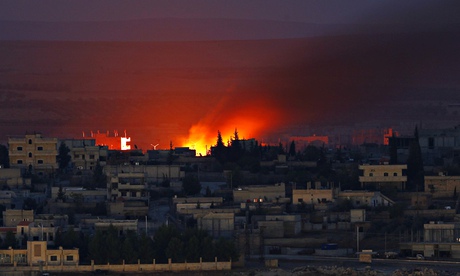
Early 2014 wasn’t so long ago, but it is increasingly difficult to remember a time when the name Isis was not in daily use. Barely a day goes by now without mention of its strategic brilliance or imagination-defying brutality. Yet Daesh, as the terror organisation is commonly known in the Arab world, has only existed for a year under that name. In that time, it has become the poster boy of Islamist terror and the subject of a growing collection of books that includes Abdel Bari Atwan’s Islamic State, Benjamin Hall’s Inside Isis and Patrick Cockburn’s The Rise of Islamic State. Cockburn has also contributed a foreword to Charles Glass’s new book, Syria Burning.
One of the problems of writing about the current situation in the Middle East, as Glass, a veteran journalist, knows only too well, is that today’s certainties are tomorrow’s laughable speculations. Iran may still refer to the US as the “Great Satan”, but the two states now share some strategic interests. Although the US used to insist that Syrian president Bashar al-Assad must step down, it is now considering the very real possibility that he could survive the war and, like America’s lamentable “red line” of chemical weapons, what was unthinkable recently could soon be the acceptable status quo. But if news moves fast, assessments have not, which is one reason why we should all read Syria Burning.
Much of this is routine background. There is the mystery of the relatively successful 19th-century cohabitation of religious and ethnic groups under the Ottoman banner, with the imperial line’s policy seemingly “to govern well, govern little”; the failure of the Arabs to secure their gains after the first world war; the disaster of the European postwar mandates; the 1982 Hama massacre, when Hafez al-Assad sent in troops to suppress an Islamist uprising; and the even greater disaster of 2011 when his son, a pale shadow of the father, allowed a localised demand for the punishment of abusive officials in Deraa to escalate into the mess we see now, with perhaps as many as 320,000 casualties and some 4 million Syrians having fled the country. One wonders whether Assad wishes he had played that Deraa incident differently.
There is another, better reason to read this book. Glass has been travelling in and writing about the Middle East since the 1980s when he was Middle East correspondent for ABC News. He made the headlines himself in 1987, when he was held hostage in Beirut for almost nine weeks. His view on how the conflict has escalated and why it has not taken the turns many others anticipated make for enlightening reading. When bursting the myth that all Alawites, the minority sect to which the Assads belong, have done well under the present regime, Glass also notes that the lack of wealth among many Alawites is a possible explanation for why the majority of Syria’s Sunnis are not fighting the regime.
Glass also has an eye for the banal, for the fact that many restaurants and cafes in Damascus are operating as normal, although prices have risen, and that three-quarters of the country’s schools were open last autumn. But he also understands the massive forces that are squeezing this remarkable country and its diverse people. He gives a plausible explanation for the sectarian divisions in a country that prided itself on its plurality, and he shows how, with the US, Turkey, Saudi, Qatar and others playing a complicated hand, the black flags of Daesh have spread so quickly in a year. But while he can trace the consequences of US, Turkish and Arab policies that have created this mess, he has been too long in the region to predict where we will be in a year’s time. Wherever we are, we will understand it better with a book like this behind us.
Anthony Sattin is the author of Young Lawrence: A Portrait of the Legend as a Young Man (John Murray). To buy Syria Burning go to orbooks.com

